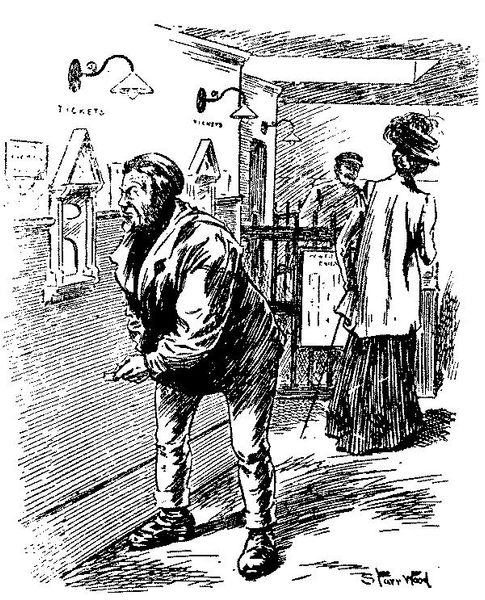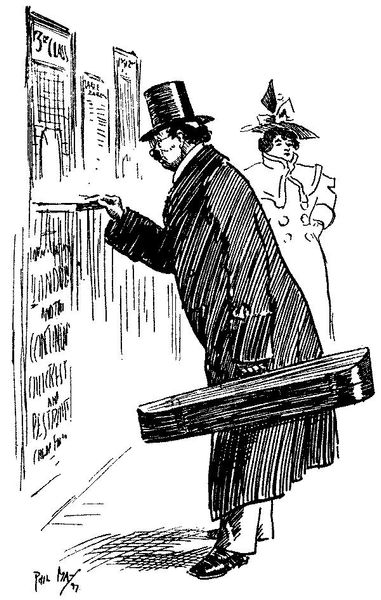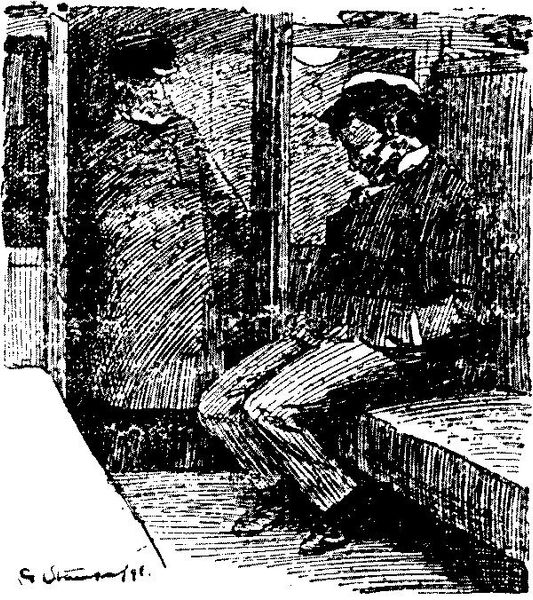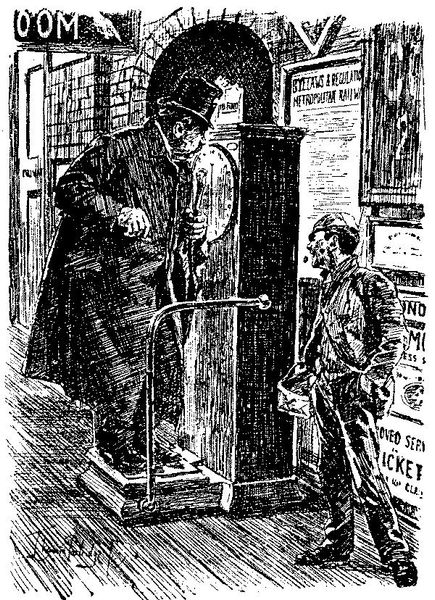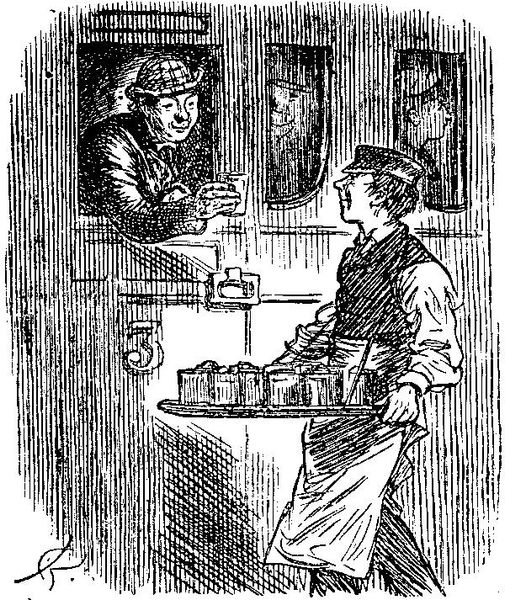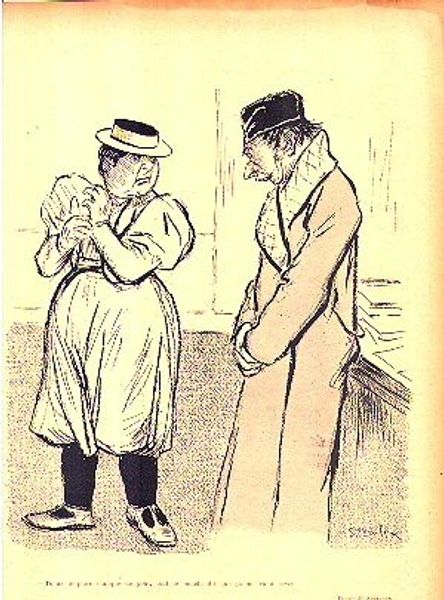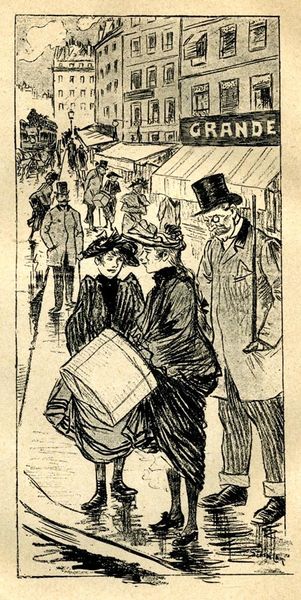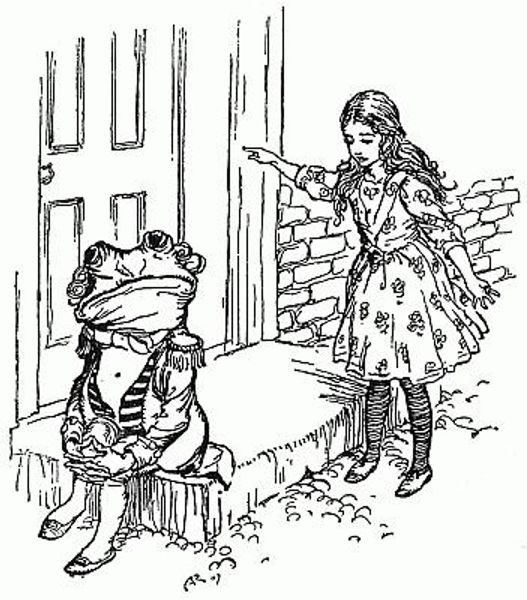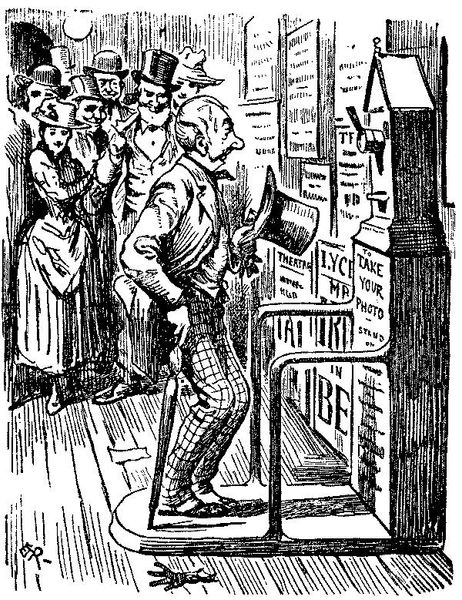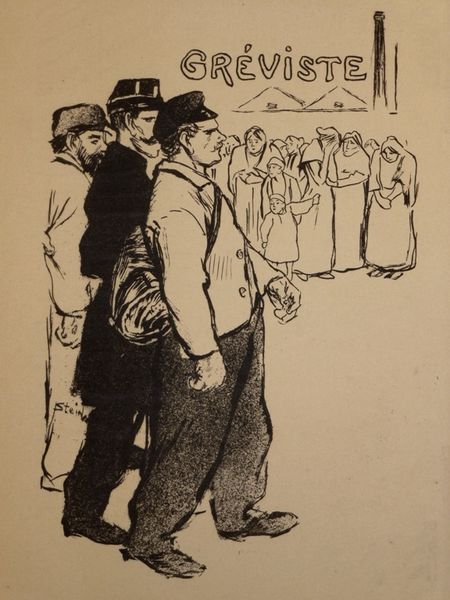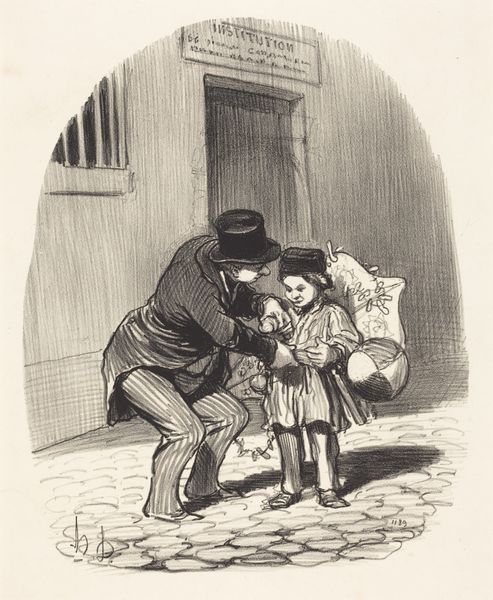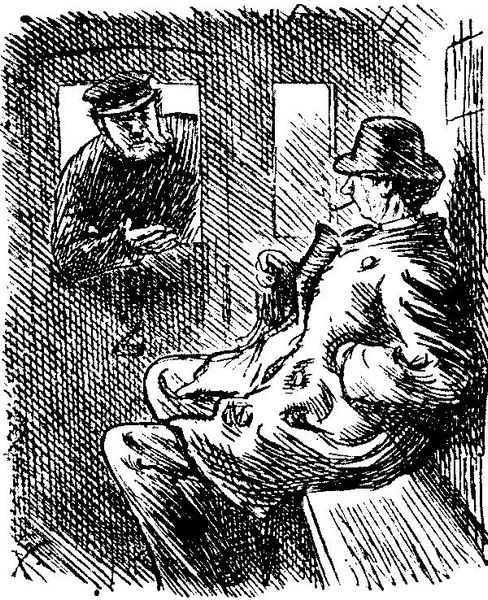
drawing, ink
#
portrait
#
drawing
#
ink
#
sketch
#
line
#
genre-painting
Copyright: Public domain
Editor: Here we have John Leech’s ink drawing, “Dignity and Impudence.” It's hard to pinpoint a precise date, but it gives the impression of a snapshot in time, maybe the Victorian era? I'm curious, what do you see as we analyze the materiality of this drawing? Curator: Immediately, I'm drawn to the repetitive lines, suggesting both hasty execution and, perhaps, mass reproduction intended for distribution. What kind of labor went into similar works during this period, and how did the means of production impact consumption? Notice, too, how the "high art" aspiration of portraiture is undercut by the sketch's graphic immediacy. How does this affect the presumed value of the work? Editor: I see your point. The rapid lines suggest accessibility, less precious and more available. Could we link the production method with its subject matter of ordinary life? The setting of a shop or street suggests a focus on the everyday consumer experience. Curator: Precisely. Consider the newspapers visible in the man's hand and the shelves. What were the materials involved? What stories and information were deemed worthy of reproduction, distribution, and consumption at this moment in time? Are there biases evident? Editor: That’s interesting – it makes me wonder about the impact this widespread visual information had on contemporary society and even on popular tastes and aesthetic trends. How did mass culture evolve out of this moment? Curator: And did the ease of reproduction cheapen the image? Devalue the skills and time needed to create them? These are crucial questions about labor, value, and access we can still investigate today. Editor: Thinking about it this way provides a completely new layer of context, bridging the artwork and consumer society. Curator: Agreed. It also compels us to remember and reconsider the laborers often rendered invisible.
Comments
No comments
Be the first to comment and join the conversation on the ultimate creative platform.
